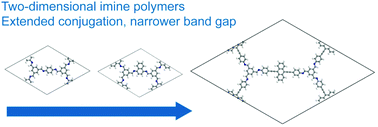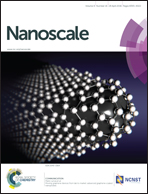On-surface synthesis of two-dimensional imine polymers with a tunable band gap: a combined STM, DFT and Monte Carlo investigation†
Abstract
Two-dimensional polymers are of great interest for many potential applications in nanotechnology. The preparation of crystalline 2D polymers with a tunable band gap is critical for their applications in nano-electronics and optoelectronics. In this work, we try to tune the band gap of 2D imine polymers by expanding the conjugation of the backbone of aromatic diamines both laterally and longitudinally. STM characterization reveals that the regularity of the 2D polymers can be affected by the existence of lateral bulky groups. Density functional theory (DFT) simulations discovered a significant narrowing of the band gap of imine 2D polymers upon the expansion of the conjugation of the monomer backbone, which has been confirmed experimentally by UV absorption measurements. Monte Carlo simulations help us to gain further insight into the controlling factors of the formation of regular 2D polymers, which demonstrated that based on the all rigid assumption, the coexistence of different conformations of the imine moiety has a significant effect on the regularity of the imine 2D polymers.


 Please wait while we load your content...
Please wait while we load your content...